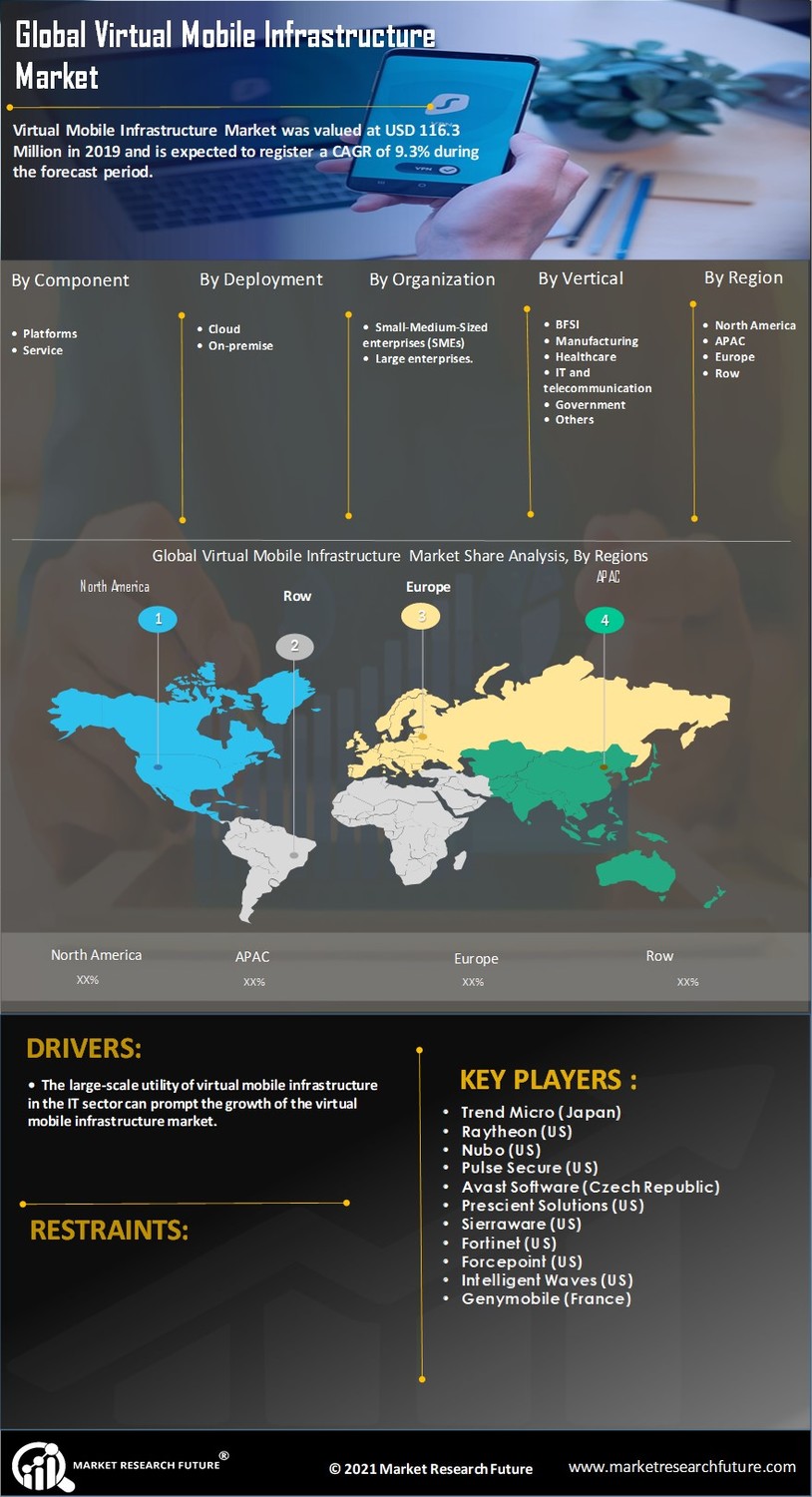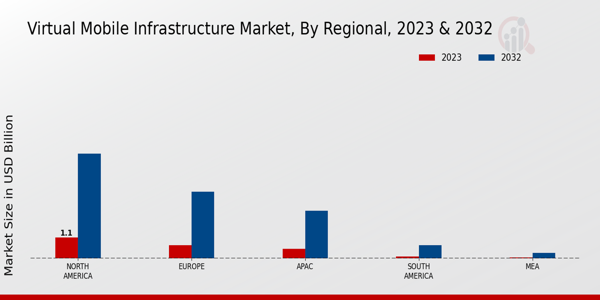Growing Mobile Workforce
The growing mobile workforce is a significant factor influencing the Virtual Mobile Infrastructure Market. With an increasing number of employees working remotely or on-the-go, businesses are compelled to provide secure and efficient access to corporate resources. This trend is underscored by the fact that nearly 70% of employees now work remotely at least part-time, highlighting the necessity for effective mobile solutions. The market is projected to expand as organizations seek to accommodate this shift, with an expected growth rate of 15% over the next few years. Virtual mobile infrastructure allows companies to maintain productivity while ensuring that employees can securely access applications and data from various devices. This adaptability is likely to remain a key consideration for businesses aiming to attract and retain talent in a competitive labor market.
Enhanced Data Security Requirements
In the context of the Virtual Mobile Infrastructure Market, enhanced data security requirements are driving significant growth. Organizations are increasingly aware of the risks associated with mobile device usage, including data breaches and unauthorized access. As a result, there is a growing emphasis on solutions that provide robust security features, such as encryption and secure access controls. The market is projected to grow at a compound annual growth rate of 20% over the next five years, driven by the need for secure mobile environments. Companies are investing in virtual mobile infrastructure to mitigate risks and protect sensitive information, thereby fostering a more secure digital landscape. This heightened focus on security is likely to shape the future of the industry, as businesses seek to comply with stringent regulations and safeguard their data.
Regulatory Compliance and Standards
Regulatory compliance and standards are increasingly shaping the Virtual Mobile Infrastructure Market. Organizations are required to adhere to various regulations concerning data protection and privacy, such as GDPR and HIPAA. This compliance necessitates the implementation of secure mobile infrastructure solutions that can safeguard sensitive information. The market is expected to grow as companies invest in technologies that ensure compliance with these regulations, with a projected annual growth rate of 12% in the coming years. Businesses are recognizing that failure to comply can result in significant penalties and reputational damage, prompting them to prioritize secure virtual mobile infrastructure. This focus on compliance is likely to drive innovation and investment in the industry, as organizations seek to align their mobile strategies with regulatory requirements.
Integration of Advanced Technologies
The integration of advanced technologies is a pivotal driver in the Virtual Mobile Infrastructure Market. The incorporation of artificial intelligence, machine learning, and automation into mobile infrastructure solutions is enhancing operational efficiency and user experience. These technologies enable predictive analytics, which can optimize resource allocation and improve performance. As organizations strive for digital transformation, the demand for innovative solutions that leverage these technologies is expected to rise. The market is anticipated to witness a growth rate of approximately 18% annually, as businesses recognize the potential of advanced technologies to streamline operations and reduce costs. This trend indicates a shift towards more intelligent and adaptive mobile infrastructure, which could redefine how organizations manage their mobile environments.
Rising Demand for Remote Work Solutions
The Virtual Mobile Infrastructure Market is experiencing a notable surge in demand for remote work solutions. As organizations increasingly adopt flexible work arrangements, the need for secure and efficient mobile access to corporate resources has become paramount. This trend is reflected in the projected growth of the market, which is expected to reach USD 5 billion by 2026. Companies are seeking to enhance productivity while ensuring data security, leading to a greater reliance on virtual mobile infrastructure. This infrastructure allows employees to access applications and data from any device, thereby facilitating seamless collaboration and communication. The shift towards remote work is likely to continue influencing the market dynamics, as businesses prioritize solutions that support a distributed workforce.





















Leave a Comment